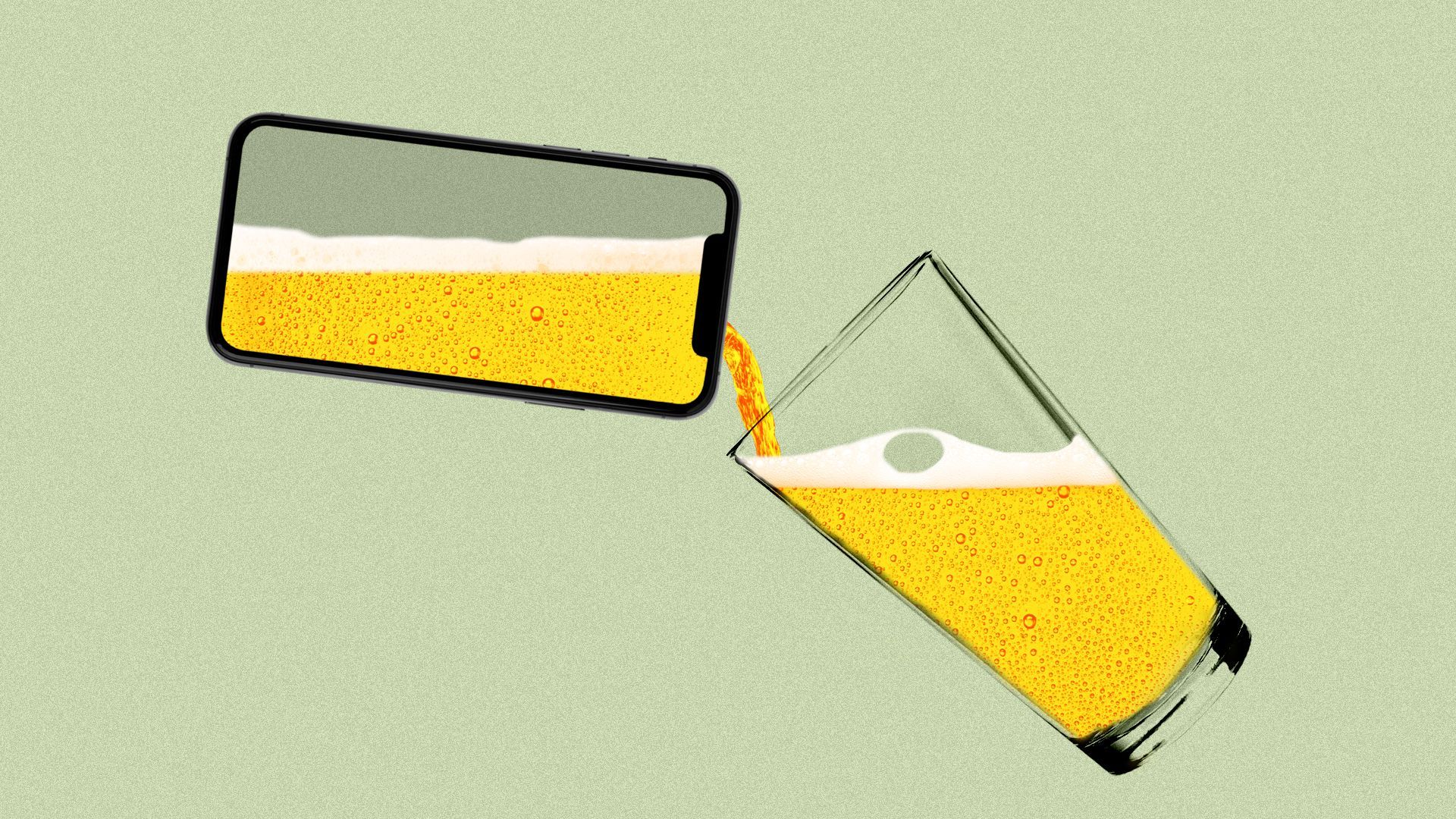AB InBev’s direct-to-consumer play

- Kimberly Chin, author ofAxios Pro: Retail Deals

Illustration: Brendan Lynch/Axios
Corona beer parent AB InBev sees a future where it can deliver beer to customers in 30 minutes.
Why it matters: Its direct-to-consumer efforts have become a big strategic bet to get more consumers to engage with its brands and unlock more revenue streams.
What they’re saying: “Everyone in the organization is part of scaling our D2C platforms,” AB InBev’s chief direct-to-consumer officer Lucas Herscovici told Axios on the sides of Shoptalk.
- “We know that if we deliver, we scale our platforms and we have a closer relationship with our consumers, we will be able to unlock growth for the category,” he says.
What’s happening: As a launching pad for global growth, AB InBev is starting a pilot in Brazil, where it is delivering Corona with limes and other staples centered around occasions to consumers.
- It plans to provide a whole assortment of snacks, food and drinks for sports events, happy hours and parties at home.
- The company won't just offer its own beers — it will deliver competing brands, spirits, snacks, ice, charcoal and meat from its dark stores, Herscovici says.
The big picture: The company has seen beer sales in the U.S. slump by volume as consumers grapple with higher prices.
- North America sales volume fell 4% last year.
Flashback: The company started its D2C efforts in 2016 with Zé Delivery in Brazil.
- “It did extremely well back then, and really exploded during the pandemic,” Herscovici says.
- This became a launching pad for the company to scale the same offering around the world.
Meanwhile, the company has another service TaDa Delivery and PerfectDraft, which is like a Nespresso machine for beer.
- PerfectDraft is a countertop machine that can quickly cool down a keg of beer and allow at-home consumers to pour beer just like at a bar.
The intrigue: With an online operation, retailers receive valuable data about consumer purchasing habits.
- Herscovici says he can see real-time information on where the consumer is going, the products they’re buying, and what they're gravitating to.
- During the World Cup, for instance, the company was able to identify when consumers were buying beer — before the game, during the game or after the game.
- Based on that intel, promotions are more specifically tailored to consumers, he says.